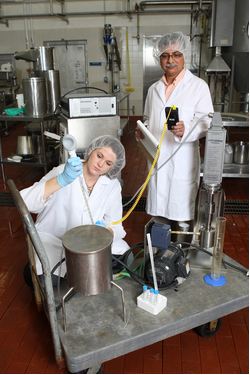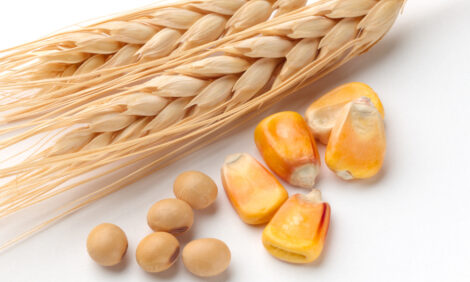



Turning Up the Heat on Hardy Bacteria in Milk
Pasteurization, although good at dealing with many pathogens in milk, does not kill heat resistant or thermoduric bacteria, say US dairy scientists.
The ability for bacillus and paenibacillus microbes to survive pasteurization is the subject of a South Dakota University study, as it is these bacteria that make milk sour and cheese soft and crumbly.
For more than a century, milk has been heated to kill any bacteria or pathogens that can affect consumer health and shorten the shelf life of the product, writes the South Dakota University team.
However, microbes- known as thermoduric-can survive pasteurization, according to South Dakota State University dairy science professor Sanjeev Anand.

The Agricultural Experiment Station researcher has begun developing ways to combat heat-resistant microorganisms, a major challenge for the world's dairy industry. His work is also supported by the Dairy Research Institute and the Midwest Dairy Food Research Center.
Characterizing Villainous Spores
Some of these microbes protect themselves from heat by forming spores, Anand explains. "This makes them trickier to inactivate," he says. Others, known as thermophilic, even thrive in high temperatures.
In addition, these organisms attach and form colonies on the contact surfaces inside the milk-processing equipment, according to Anand. As the colony expands, the layers form a biofilm that feeds and protects the organisms.
The processing system environment essentially supports their growth, he reports. Many of these biofilm-embedded organisms cannot be inactivated through conventional cleaning methods.
Milk products containing high microbe counts have flavor, texture and spoilage problems, Anand explains. In addition, some spore formers produce harmful toxins.
Rounding Up Bad Guys
For nearly five years, Anand and his team of eight graduate and 10 undergraduate researchers worked on projects related to thermoduric bacteria and biofilms. Milk, cheese, milk powder, and environmental samples were collected from 10 dairies in eastern South Dakota and three processing plants outside the state. The team then isolates the heat resistant bacteria.
South Dakota's dairy industry produces 1.8 billion pounds of milk and 232 million pounds of cheese, producing a total economic impact of $1.28 billion a year. Seven plants across the state process milk with another set to begin operation in Brookings this year.
The information gathered is shared with producers and the dairy industry, Anand points out. "This helps establish a link with management practice to bring these counts down at a producer level, and further control them during processing."
The isolates are being identified using techniques such as molecular typing and matrix-assisted laser desorption/ionization using time of flight, or MALDI-TOF. "We are approaching this very systematically, using the latest technology," says Anand.
The researchers are investigating ways to either kill the microbes or to make them susceptible to thermal treatment, which Anand describes as "intervention prior to pasteurization or in combination with it."
At this early stage of investigation, the team has developed a method which when combined with pasteurization have been relatively successful in dealing with "vegetative cells of thermoduric sporeformers to a large extent, and spores to a less extent," he reports. The process has been used with a static or batch pasteurization and is being adapted to a continuous processing system.
If successful, he says, "we will have an integrated process at pilot scale to share with industry."
Knocking Out Colonies
In addition, the team has also targeted microbial biofilms, which form on joints, plate heat exchangers and filtration membranes within the milk processing equipment.
Each organism gathered from the dairy facilities is being isolated and cultured to develop single and multi-species biofilms. "Under lab conditions, a biofilm can takes anywhere from 12 to 48 hours to form," he comments.
This process helps the researchers determine under what conditions the biofilms form and, ultimately, "how we can change our cleaning system to remove them more efficiently and effectively," Anand explains.
The biofilm embedded microbes are studied not only in a static system but also in bioreactors which simulate the continuous flow of milk or whey. "This is closer to the real system," Anand says, though the bioreactors are not pressurized like the automatic processing system.
Researchers are identifying which chemicals are effective on each species of organism and then will analyze those results to develop a better cleaning protocol to knock out these microbes.
Damaging Equipment
When spore formers persist in an environment, they can also do irreversible damage to the stainless steel contact surfaces within the milk-processing equipment, Anand explains. This can lead to corrosion in pre-heaters and spray dryers.
Continued support from Dairy Research Institute will allow the research team to look at modifying the contact surfaces within the equipment to reduce the ability of these microbes to colonize and form biofilms.
Through this multipronged approach at lowering thermoduric microbe levels, the SDSU researcher hopes to improve the quality, safety and shelf life of dairy products.


